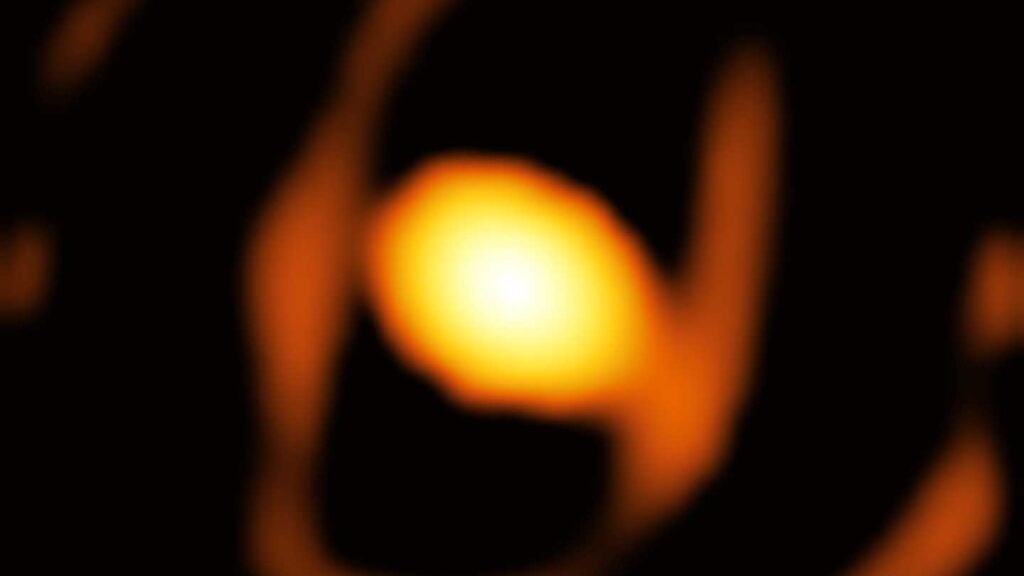[ad_1]
For the primary time, scientists have captured a zoomed-in picture of a star outdoors of our Milky Approach galaxy. The picture revealed surprising details about WOH G64, a giant star that is probably dying, researchers report November 21 in Astronomy & Astrophysics.
The star, which is about 1,500 occasions the scale of our solar, sits 160,000 light-years away from Earth. It lives contained in the Massive Magellanic Cloud, a small galaxy that orbits the Milky Approach.
Till now, WOH G64 appeared nearly not possible to {photograph} clearly — it could have required a telescope larger than 100 meters throughout. As an alternative, astronomers mixed info from 4 1.8-meter telescopes to piece collectively the picture. And it’s giving them a uncommon view of what occurs on the finish of a star’s life.
“This star, WOH G64, provides us a really actual alternative to analyze what a star is doing, supposedly, simply earlier than a supernova explosion,” says Keiichi Ohnaka, an astronomer on the Universidad Andrés Bello in Santiago, Chile. “‘Simply earlier than’ in an astronomical sense. Not right now or subsequent week or subsequent yr.”
It might be 10,000 to 100,000 years earlier than WOH G64 explodes right into a supernova, if it does in any respect. However the clues that trace of the star’s demise are promising. The star was surrounded by a hazy egg-shaped cocoon, which Ohnaka theorizes might be made from the fabric that stars emit once they’re dying, like gasoline and dirt particles.
However the principle trace that the star is dying comes from simply how light it appeared within the picture, particularly in contrast with older data of the star’s brightness. Ohnaka thinks the star began ejecting increasingly more materials over the previous decade, inflicting it to dim. Dimming durations might be short-term for some stars, however others by no means bounce again (SN: 11/29/20).
“At first, we wished to take one other close-up,” says Ohnaka. But it surely didn’t fairly work. The star was too faint. “So, we began monitoring it to see when it comes again…. However perhaps, extra curiously, it may not come again. It might simply get fainter and fainter.”
[ad_2]
Source link
